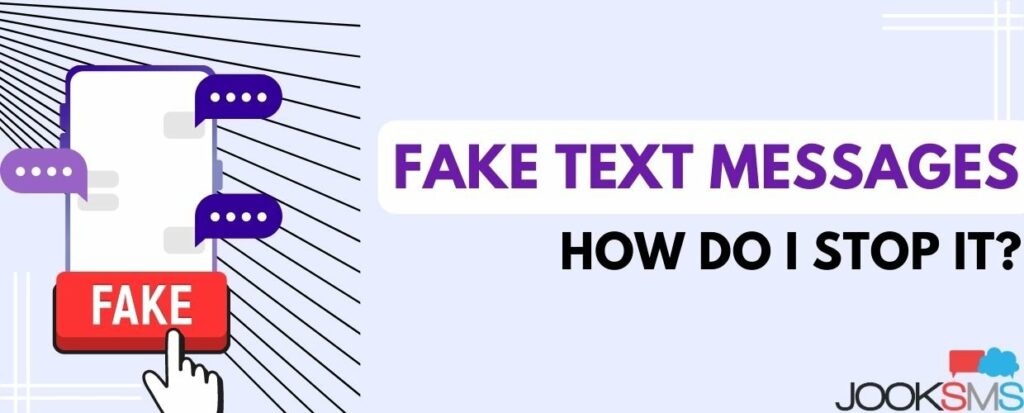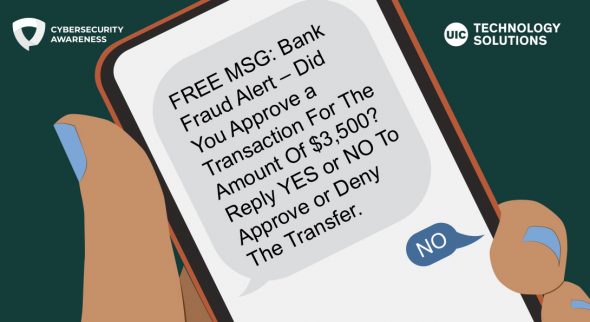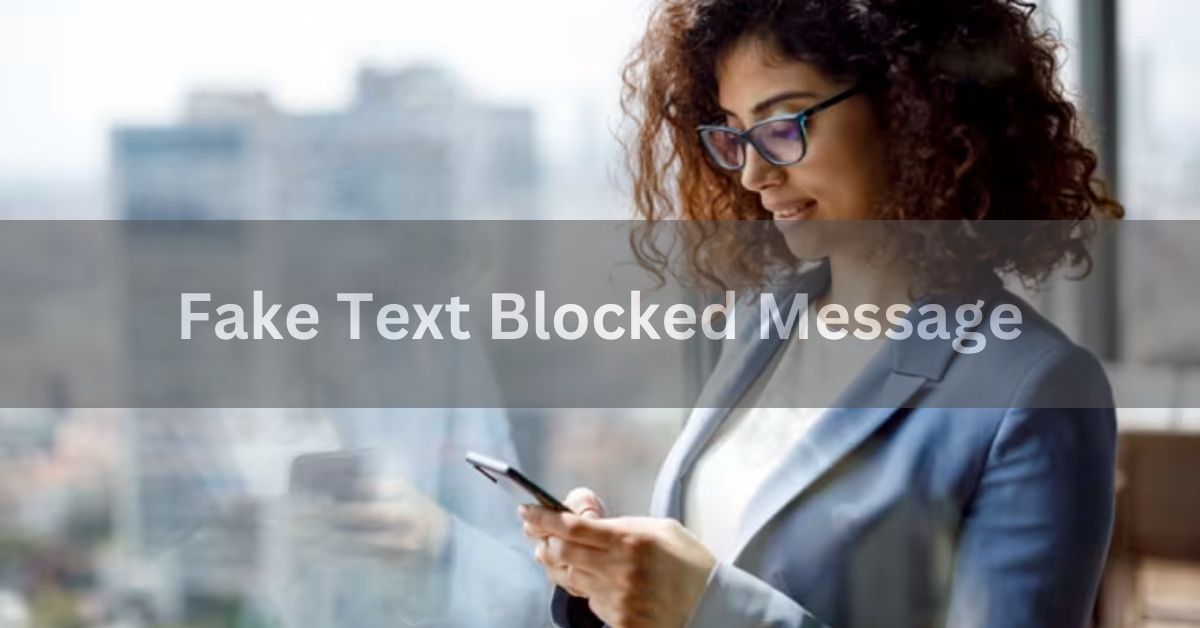Safeguarding yourself in our interconnected world starts with recognizing scams, deceit, and false connections.
In the contemporary digital era, text messaging has emerged as a primary mode of communication. Yet, amidst the convenience of texting lies the peril of encountering deceptive or fraudulent messages.
These spam texts range from phishing endeavors and scams to catfishing and identity theft schemes.
Understanding Common Types of Spam Text Messages!
Before delving into the methods of identification, it’s crucial to acquaint yourself with the various types of prevalent fake text messages today:
- Phishing texts: Phishing involves the deception of individuals to divulge sensitive information, such as passwords or credit card details, by masquerading as legitimate institutions like banks or government agencies.
- Smishing (SMS phishing): Smishing messages typically contain a link or phone number that, when interacted with, can result in malware installation or identity theft.
- Spoofed texts: Spoofed messages appear from a familiar contact, yet they originate from a different source. These are frequently employed for fraudulent activities.
- Lottery or prize scams: These texts assert that you’ve won a prize or lottery, pressuring you to provide personal information or pay fees to claim the winnings.
How to Identify a Fake Text Message – How to Tell If a Text is Spam!

Identifying whether a message is a prank text involves recognizing several common indicators. Here are key examples:
- Identify the Sender: Verify the sender’s number or identity. The message may be fake if it is from an unknown or suspicious source.
- Check the Sent Number: Be cautious of messages from unknown or unusually long phone numbers. Legitimate institutions often use shortcodes or identifiable numbers.
- Examine the Tone of the Message: Urgent or threatening language is a red flag. Scammers often create a sense of urgency to prompt impulsive actions.
- Check for Personalization: Authentic messages usually address you by name, not with generic greetings like “Dear Customer.” Lack of personalization can indicate a scam.
- Requests for Personal Information: Legitimate entities seldom ask for sensitive information through text messages. Be cautious if you’re asked for passwords, Social Security numbers, or financial details.
- Beware of Unexpected Prizes or Offers: If you haven’t entered a contest but received a message about winning a prize, be skeptical. Verify such claims through official channels.
- Suspicious Money Requests: If someone claims to know you and requests financial assistance, verify the request through another communication channel to confirm its authenticity.
- Verify with the Sender: If the message seems suspicious, contact the alleged sender through official channels to confirm the text’s authenticity.
- Watch out for Unknown Attachments: Avoid opening unexpected attachments, especially from unknown sources, as they might contain malware or viruses.
Read: 1337 Torrent – The Ultimate Guide In 2024
Fake Credit Card Text Messages!

A fraudulent credit card text message is a scam tactic in which scammers send deceptive text messages, often posing as a legitimate financial institution or credit card company.
Fake credit card text messages may manifest in various forms, encompassing the following suspicious scenarios:
- Phishing Messages: Impersonating your bank or credit card company, these messages request verification of account information through text replies or link clicks. The links typically direct to counterfeit websites designed to pilfer login credentials, credit card numbers, or other personal details.
- Fraud Alerts: Scammers send messages alleging suspicious activity on your credit card, urging you to call a specified number or respond with your account details. Crafted to induce panic, these alerts prompt hasty decisions that jeopardize your security.
- Offer Scams: Fake messages promise credit card rewards, discounts, or cashback offers, requiring you to provide credit card details to claim them. Once scammers obtain this information, unauthorized transactions on your card become possible.
- Payment Requests: Posing as friends or family, scammers claim urgent financial need, asking you to use your credit card for money transfers through a payment service. These requests are often urgent and emotionally manipulative.
- Credit Card Upgrade or Activation Messages: Fraudsters, claiming to be from your bank, assert that your credit card requires upgrading or activation. They solicit sensitive information to ostensibly complete the process, though legitimate financial institutions don’t request such details via text.
- Malware Distribution: Some fake credit card text messages contain links for downloading apps or files, which, when clicked, may install malware on your device, compromising data security.
Fake Blocked Messages!

A deceptive blocked text message is a false notification sent to a user, misleadingly asserting that their message or attempt to contact someone has been blocked.
These messages aim to manipulate emotions, instill a sense of urgency, or deceive users into specific actions and may be linked to various scams or phishing endeavors.
Additionally, there are fake blocked number messages—misleading communications dispatched by scammers or malicious entities to make recipients believe that someone has blocked their phone number.
Such messages are crafted to induce confusion, anxiety, or curiosity, compelling individuals to take specific actions or click on links embedded in the message.
- Phishing Scams: Cybercriminals send deceptive blocked messages alleging that the recipient’s account is blocked or suspended or their phone number is blocked. The message prompts the user to click on a link or call a number for issue resolution, leading to a phishing website or a scam phone line where personal information is pilfered.
- Emotional Manipulation: In personal relationships, someone might send a fake blocked message to manipulate emotions. For instance, an individual might simulate being blocked by a friend or partner, seeking sympathy or attention.
- Fraudulent Services: Certain fraudulent services claim to unblock messages or contacts for a fee. Unsuspecting users may pay for these services, often discovering that they don’t work or, worse, falling victim to additional scams.
- Spam and Unwanted Messages: Scammers may use fake blocked messages to trick users into responding, clicking links, or engaging in conversations. These messages aim to bypass spam filters by generating a sense of urgency.
Protective Measures – How to Stay Safe from Scam Text Messages:

Empower yourself and others: Stay abreast of prevalent scams and impart knowledge to friends and family, particularly those less acquainted with digital threats.
- Activate Spam Filters: Leverage the spam filters available in most messaging apps to automatically sift through potentially deceptive messages.
- Exercise Caution with Urgency: Scammers often inject a sense of urgency or panic into their messages. Pause and assess the situation before responding.
- Report Dubious Messages: Flag counterfeit texts to your service provider and forward suspicious messages to the Federal Trade Commission (FTC) to contribute to the fight against scams.
- Utilize Security Software: Install reputable security software on your phone, such as RAV VPN for Android or RAV VPN for iOS, to bolster identity protection.
- Maintain Device Updates: Keep your smartphone and messaging apps up-to-date to benefit from the latest security features and patches.
Read: Tpb Proxy – Best Pirate Bay Alternatives and Proxy Sites for 2024
FAQs:
1. What are phishing texts in the context of fake text blocked messages?
Phishing texts attempt to deceive individuals into divulging sensitive information by posing as legitimate entities, such as banks or government agencies, within the realm of fake text-blocked messages.
2. How can I identify a potential scam in a blocked text message?
Scrutinize the sender’s identity, check for unusual phone numbers, and be wary of urgent or threatening language. Scammers often create a sense of urgency to manipulate recipients.
3. What role do spelling and grammar errors play in recognizing fake text messages?
Spelling mistakes or grammatical errors in messages can be indicative of a scam. Genuine communications from professional organizations typically maintain polished language.
4. Why should I be cautious of unexpected prizes or offers in text messages?
Scammers may use fake blocked messages to claim prizes, urging recipients to provide personal information. Verify such claims through official channels to avoid falling victim to scams.
5. How can emotional manipulation be a part of fake blocked messages?
In personal relationships, fake blocked messages might be used to manipulate emotions, creating scenarios of being blocked to elicit sympathy or attention.
6. What is the significance of exercising caution with urgency in scam text messages?
Scammers inject urgency or panic into messages to prompt hasty decisions. It’s crucial to assess the situation before responding to avoid falling prey to emotional manipulation.
7. Why is it essential to independently verify information in fake blocked text messages?
Independent verification ensures the authenticity of information, mitigating the risk of falling victim to scams or phishing attempts associated with fake blocked messages.
8. How can individuals protect themselves from fake text blocked messages and related scams?
Stay informed about prevalent scams, activate spam filters, exercise caution with urgency, report suspicious messages, utilize security software, and keep devices updated to bolster protection against fake text blocked messages. For businesses and individuals relying heavily on mobile devices, implementing Enterprise-grade mobile security can provide advanced protection against phishing attempts, malicious apps, and text-based scams, ensuring a safer mobile experience.
Conclusion:
Navigating the digital landscape requires vigilance and awareness, especially when encountering potential threats like fake text blocked messages.
By understanding common scam indicators, staying informed, and implementing protective measures, individuals can confidently safeguard themselves against deceptive practices. Stay cautious, verify information, and empower others to recognize and avoid the pitfalls of fake text blocked messages for a secure digital experience.
Read:
- Redmi 9a Gcam Port – A Comprehensive Overview In 2024
- Best Paying Jobs In Capital Goods – A Brief Overview
- Korean Wave Perm – Exploring the Everything You Need To Know
